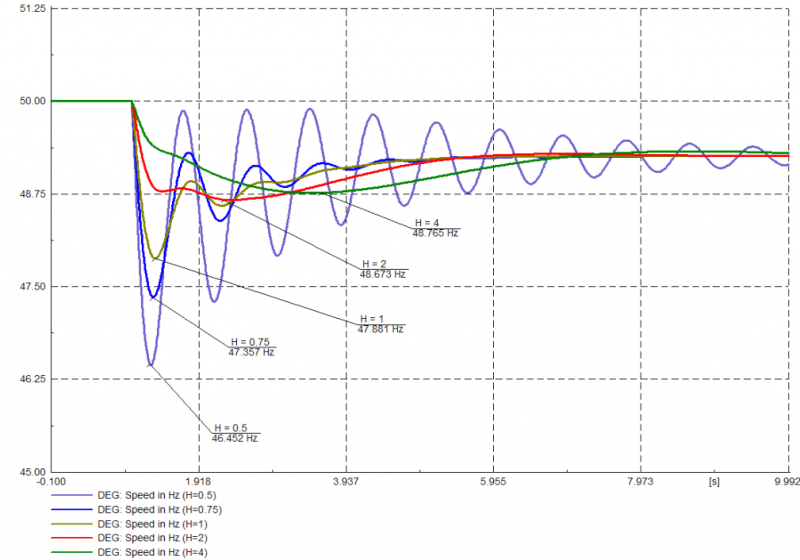Carlos Melim
Electrical
- May 31, 2018
- 24
Good afternoon
Suppose I have two synchronous generators. One rated 10 MVA with H=4s and the other 20 MVA with H=2s.
I understand that the SIRs of the generators don’t depend on their operating point.
But if both are working at, let’s say, 5 MVA, and there’s an outage of another generator in the grid, wouldn’t the 20 MVA generator contribute instantaneously with more MVAs than the 10 MVA, even for a shorter period of time?
Can the higher MVA rating compensate for the lower inertia constant?
I’m looking forward to hearing from you.
Carlos Melim
Suppose I have two synchronous generators. One rated 10 MVA with H=4s and the other 20 MVA with H=2s.
I understand that the SIRs of the generators don’t depend on their operating point.
But if both are working at, let’s say, 5 MVA, and there’s an outage of another generator in the grid, wouldn’t the 20 MVA generator contribute instantaneously with more MVAs than the 10 MVA, even for a shorter period of time?
Can the higher MVA rating compensate for the lower inertia constant?
I’m looking forward to hearing from you.
Carlos Melim

